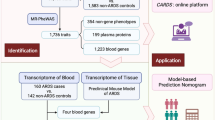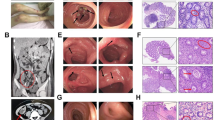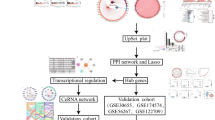Abstract
Serum biomarkers were explored based on the peripheral blood gene expression profiles of premature coronary artery disease (PCAD). RNA sequencing (RNA-Seq) was used to detect PCAD-specific differentially expressed genes (DEGs). Quantitative real-time polymerase chain reaction (RT-PCR) was used to validate the most significant DEGs, and enzyme-linked immunosorbent assay (ELISA) was utilized to quantify the effect on corresponding serum proteins. Fifty-nine PCAD-specific DEGs were identified. Functional analysis showed positive regulation of T cell-mediated cytotoxicity, regulation of T cell-mediated immunity, and the regulation of alpha-beta T cell proliferation which were enriched in PCAD. RT-PCR validated the significant difference in the expression of BAG6, MUC5B, and APOA2 between PCAD and late-onset coronary artery disease (LCAD) patients. ELISA validation showed serum MUC5B increased dramatically in PCAD when compared to LCAD. Our study found T cells contribute to the occurrence of PCAD, and the inflammatory factor MUC5B may be a novel serum marker in PCAD patients.




Similar content being viewed by others
Data Availability
Data supporting the findings of this study, including the RNA sequencing raw data, are available from the corresponding author (Y.L) upon request.
References
Libby P, Theroux P. Pathophysiology of coronary artery disease. Circulation. 2005;111(25):3481–8. https://doi.org/10.1161/CIRCULATIONAHA.105.537878.
Zhao D, Liu J, Wang M, et al. Epidemiology of cardiovascular disease in China: current features and implications. Nat Rev Cardiol. 2019;16(4):203–12. https://doi.org/10.1038/s41569-018-0119-4.
Andersson C, Vasan RS. Epidemiology of cardiovascular disease in young individuals. Nat Rev Cardiol. 2018;15(4):230–40. https://doi.org/10.1038/nrcardio.2017.154.
Aggarwal A, Srivastava S, Velmurugan M. Newer perspectives of coronary artery disease in young. World J Cardiol. 2016;8(12):728–34. https://doi.org/10.4330/wjc.v8.i12.728.
Patel MR, Peterson ED, Dai D, et al. Low diagnostic yield of elective coronary angiography. N Engl J Med. 2010;362(10):886–95. https://doi.org/10.1056/NEJMoa0907272.
Farrehi PM, Bernstein SJ, Rasak M, et al. Frequency of negative coronary arteriographic findings in patients with chest pain is related to community practice patterns. Am J Manag Care. 2002;8(7):643–8.
Minha S, Behar S, Krakover R, et al. Characteristics and outcome of patients with acute coronary syndrome and normal or near-normal coronary angiography. Coron Artery Dis. 2010;21(4):212–6. https://doi.org/10.1097/MCA.0b013e328338cd5c.
From AM, Kane G, Bruce C, et al. Characteristics and outcomes of patients with abnormal stress echocardiograms and angiographically mild coronary artery disease (<50% stenoses) or normal coronary arteries. J Am Soc Echocardiogr. 2010;23(2):207–14. https://doi.org/10.1016/j.echo.2009.11.023.
Shukor MFA, Musthafa QA, Mohd Yusof YA, et al. Biomarkers for premature coronary artery disease (PCAD): a case control study. Diagnostics (Basel, Switzerland). 2023;13(2) https://doi.org/10.3390/diagnostics13020188.
Wei A, Liu J, Wang L, et al. Correlation of triglyceride-glucose index and dyslipidaemia with premature coronary heart diseases and multivessel disease: a cross-sectional study in Tianjin, China. BMJ open. 2022;12(9):e065780. https://doi.org/10.1136/bmjopen-2022-065780.
Wu Z, Liu L, Wang W, et al. Triglyceride-glucose index in the prediction of adverse cardiovascular events in patients with premature coronary artery disease: a retrospective cohort study. Cardiovasc Diabetol. 2022;21(1):142. https://doi.org/10.1186/s12933-022-01576-8.
Bao J, Zheng S, Huang J, et al. Mental health is correlated with lipoprotein(a) levels in male patients with premature coronary heart disease. Ann Palliat Med. 2021;10(6):6482–92. https://doi.org/10.21037/apm-21-1024.
Afanasieva OI, Tyurina AV, Klesareva EA, et al. Lipoprotein(a), immune cells and cardiovascular outcomes in patients with premature coronary heart disease. J Pers Med. 2022;12(2) https://doi.org/10.3390/jpm12020269.
Shi YP, Cao YX, Jin JL, et al. Lipoprotein(a) as a predictor for the presence and severity of premature coronary artery disease: a cross-sectional analysis of 2433 patients. Coron Artery Dis. 2021;32(1):78–83. https://doi.org/10.1097/mca.0000000000000940.
Haji Aghajani M, Toloui A, Ahmadzadeh K, et al. Premature coronary artery disease and plasma levels of interleukins; a systematic scoping review and meta-analysis, Arch. Acad Emerg Med. 2022;10(1):e51. https://doi.org/10.22037/aaem.v10i1.1605.
Joehanes R, Johnson AD, Barb JJ, et al. Gene expression analysis of whole blood, peripheral blood mononuclear cells, and lymphoblastoid cell lines from the Framingham Heart Study. Physiol Genomics. 2012;44(1):59–75. https://doi.org/10.1152/physiolgenomics.00130.2011.
Barrett TJ, Lee AH, Smilowitz NR, et al. Whole-blood transcriptome profiling identifies women with myocardial infarction with nonobstructive coronary artery disease. Circ Genom Precis Med. 2018;11(12):e002387. https://doi.org/10.1161/CIRCGEN.118.002387.
Chen JX, He S, Wang YJ, et al. Comprehensive analysis of mRNA expression profiling and identification of potential diagnostic biomarkers in coronary artery disease. ACS Omega. 2021;6(37):24016–26. https://doi.org/10.1021/acsomega.1c03171.
Chiesa M, Piacentini L, Bono E, et al. Whole blood transcriptome profile at hospital admission discriminates between patients with ST-segment elevation and non-ST-segment elevation acute myocardial infarction. Sci Rep. 2020;10(1):8731. https://doi.org/10.1038/s41598-020-65527-7.
McCaffrey TA, Toma I, Yang Z, et al. RNA sequencing of blood in coronary artery disease: involvement of regulatory T cell imbalance. BMC Med Genet. 2021;14(1):216. https://doi.org/10.1186/s12920-021-01062-2.
Andreini D, Melotti E, Vavassori C, et al. Whole-blood transcriptional profiles enable early prediction of the presence of coronary atherosclerosis and high-risk plaque features at coronary CT angiography. Biomedicines. 2022;10(6) https://doi.org/10.3390/biomedicines10061309.
Reagent, T. TRIzol™ Reagent User Guide. Thermofisher.com/support. https://assets.thermofisher.cn/TFS-Assets/LSG/manuals/trizol_reagent.pdf. 2023;14:1–4.
Pertea M, Kim D, Pertea GM, et al. Transcript-level expression analysis of RNA-seq experiments with HISAT, StringTie and Ballgown. Nat Protoc. 2016;11(9):1650–67. https://doi.org/10.1038/nprot.2016.095.
Yates A, Akanni W, Amode MR, et al. Ensembl 2016. Nucleic Acids Res. 2016;44(D1):D710–6. https://doi.org/10.1093/nar/gkv1157.
Love MI, Huber W, Anders S. Moderated estimation of fold change and dispersion for RNA-seq data with DESeq2. Genome Biol. 2014;15(12):550. https://doi.org/10.1186/s13059-014-0550-8.
Zhou Y, Zhou B, Pache L, et al. Metascape provides a biologist-oriented resource for the analysis of systems-level datasets. Nat Commun. 2019;10(1):1523. https://doi.org/10.1038/s41467-019-09234-6.
Villanueva, RAM, Chen, ZJ, ggplot2: elegant graphics for data analysis (2nd ed.), Measurement: interdisciplinary research and perspectives. 17(3)(2019) 160-167, https://doi.org/10.1080/15366367.2019.1565254.
Yu G, Wang LG, Han Y, et al. clusterProfiler: an R package for comparing biological themes among gene clusters. OMICS. 2012;16(5):284–7. https://doi.org/10.1089/omi.2011.0118.
Stacklies W, Redestig H, Scholz M, et al. pcaMethods--a bioconductor package providing PCA methods for incomplete data. Bioinformatics. 2007;23(9):1164–7. https://doi.org/10.1093/bioinformatics/btm069.
Livak KJ, Schmittgen TD. Analysis of relative gene expression data using real-time quantitative PCR and the 2(-Delta Delta C(T)) Method. Methods. 2001;25(4):402–8. https://doi.org/10.1006/meth.2001.1262.
Ariansen I, Strand BH, Kjøllesdal MKR, et al. The educational gradient in premature cardiovascular mortality: examining mediation by risk factors in cohorts born in the 1930s, 1940s and 1950s. Eur J Prev Cardiol. 2019;26(10):1096–103. https://doi.org/10.1177/2047487319826274.
Arora S, Stouffer GA, Kucharska-Newton AM, et al. Twenty year trends and sex differences in young adults hospitalized with acute myocardial infarction. Circulation. 2019;139(8):1047–56. https://doi.org/10.1161/circulationaha.118.037137.
Gupta A, Wang Y, Spertus JA, et al. Trends in acute myocardial infarction in young patients and differences by sex and race, 2001 to 2010. J Am Coll Cardiol. 2014;64(4):337–45. https://doi.org/10.1016/j.jacc.2014.04.054.
Vikulova DN, Grubisic M, Zhao Y, et al. Premature atherosclerotic cardiovascular disease: trends in incidence, risk factors, and sex-related differences, 2000 to 2016. J Am Heart Assoc. 2019;8(14):e012178. https://doi.org/10.1161/JAHA.119.012178.
Konishi H, Miyauchi K, Kasai T, et al. Long-term prognosis and clinical characteristics of young adults (≤40 years old) who underwent percutaneous coronary intervention. J Cardiol. 2014;64(3):171–4. https://doi.org/10.1016/j.jjcc.2013.12.005.
Gupta R, Misra A, Vikram NK, et al. Younger age of escalation of cardiovascular risk factors in Asian Indian subjects. BMC Cardiovasc Disord. 2009;9:28. https://doi.org/10.1186/1471-2261-9-28.
Christus T, Shukkur AM, Rashdan I, et al. Coronary artery disease in patients aged 35 or less - a different beast? Heart Views. 2011;12(1):7–11. https://doi.org/10.4103/1995-705X.81550.
van Loon JE, de Maat MP, Deckers JW, et al. Prognostic markers in young patients with premature coronary heart disease. Atherosclerosis. 2012;224(1):213–7. https://doi.org/10.1016/j.atherosclerosis.2012.06.067.
Pineda J, Marín F, Marco P, et al. Premature coronary artery disease in young (age <45) subjects: interactions of lipid profile, thrombophilic and haemostatic markers. Int J Cardiol. 2009;136(2):222–5. https://doi.org/10.1016/j.ijcard.2008.04.020.
Iribarren C, Go AS, Husson G, et al. Metabolic syndrome and early-onset coronary artery disease: is the whole greater than its parts? J Am Coll Cardiol. 2006;48(9):1800–7. https://doi.org/10.1016/j.jacc.2006.03.070.
Han H, Du R, Cheng P, et al. Comprehensive analysis of the immune infiltrates and aberrant pathways activation in atherosclerotic plaque. Front Cardiovasc Med. 2020;7:602345. https://doi.org/10.3389/fcvm.2020.602345.
Tse K, Tse H, Sidney J, et al. T cells in atherosclerosis. Int Immunol. 2013;25(11):615–22. https://doi.org/10.1093/intimm/dxt043.
Meng X, Yang J, Dong M, et al. Regulatory T cells in cardiovascular diseases. Nat Rev Cardiol. 2016;13(3):167–79. https://doi.org/10.1038/nrcardio.2015.169.
Ait-Oufella H, Salomon BL, Potteaux S, et al. Natural regulatory T cells control the development of atherosclerosis in mice. Nat Med. 2006;12(2):178–80. https://doi.org/10.1038/nm1343.
Sharma M, Schlegel MP, Afonso MS, et al. Regulatory T cells license macrophage pro-resolving functions during atherosclerosis regression. Circ Res. 2020;127(3):335–53. https://doi.org/10.1161/CIRCRESAHA.119.316461.
Hsieh CS, Heimberger AB, Gold JS, et al. Differential regulation of T helper phenotype development by interleukins 4 and 10 in an alpha beta T-cell-receptor transgenic system. Proc Natl Acad Sci U. S. A. 1992;89(13):6065–9. https://doi.org/10.1073/pnas.89.13.6065.
Mallat Z, Heymes C, Ohan J, et al. Expression of interleukin-10 in advanced human atherosclerotic plaques: relation to inducible nitric oxide synthase expression and cell death. Arterioscler Thromb Vasc Biol. 1999;19(3):611–6. https://doi.org/10.1161/01.atv.19.3.611.
Ilhan F, Kalkanli ST. Atherosclerosis and the role of immune cells. World J Clin Cases. 2015;3(4):345–52. https://doi.org/10.12998/wjcc.v3.i4.345.
Radicioni G, Ceppe A, Ford AA, et al. Airway mucin MUC5AC and MUC5B concentrations and the initiation and progression of chronic obstructive pulmonary disease: an analysis of the SPIROMICS cohort. Lancet Respir Med. 2021;9(11):1241–54. https://doi.org/10.1016/S2213-2600(21)00079-5.
Ghosh AJ, Moll M, Hobbs BD, et al. Variability in MUC5B expression is dependent on genotype and endotype in idiopathic pulmonary fibrosis. Am J Respir Crit Care Med. 2023;207(10):1401–4. https://doi.org/10.1164/rccm.202209-1835LE.
Simone E, Ding BS, Muzykantov V. Targeted delivery of therapeutics to endothelium. Cell Tissue Res. 2009;335(1):283–300. https://doi.org/10.1007/s00441-008-0676-7.
Peng H, Han SH, Liu HY, et al. Relationship of inflammation and endothelial dysfunction with risks to cardiovascular disease among people in Inner Mongolia of China. Biomed Environ Sci. 2013;26(10):792–800. https://doi.org/10.3967/bes2013.002.
Wu Y, Ren D, Chen GY. Siglec-E negatively regulates the activation of TLR4 by controlling its endocytosis. J Immunol. 2016;197(8):3336–47. https://doi.org/10.4049/jimmunol.1600772.
Yu H, Gonzalez-Gil A, Wei Y, et al. Siglec-8 and Siglec-9 binding specificities and endogenous airway ligand distributions and properties. Glycobiology. 2017;27(7):657–68. https://doi.org/10.1093/glycob/cwx026.
Zhang Y, Zheng Y, Li J, et al. Immunoregulatory Siglec ligands are abundant in human and mouse aorta and are up-regulated by high glucose. Life Sci. 2019;216:189–99. https://doi.org/10.1016/j.lfs.2018.11.049.
Maiga SF, Kalopissis AD, Chabert M. Apolipoprotein A-II is a key regulatory factor of HDL metabolism as appears from studies with transgenic animals and clinical outcomes. Biochimie. 2014;96:56–66. https://doi.org/10.1016/j.biochi.2013.08.027.
Gomaraschi M, Sinagra G, Serdoz LV, et al. The plasma concentration of Lpa-I:A-II particles as a predictor of the inflammatory response in patients with ST-elevation myocardial infarction. Atherosclerosis. 2009;202(1):304–11. https://doi.org/10.1016/j.atherosclerosis.2008.04.004.
Mock JY, Chartron JW, Zaslaver M, et al. Bag6 complex contains a minimal tail-anchor-targeting module and a mock BAG domain. Proc Natl Acad Sci U. S. A. 2015;112(1):106–11. https://doi.org/10.1073/pnas.1402745112.
Pattingre S, Turtoi A. BAG family members as mitophagy regulators in mammals. Cells. 2022;11(4) https://doi.org/10.3390/cells11040681.
Oka SI, Sreedevi K, Shankar TS, et al. PERM1 regulates energy metabolism in the heart via ERRalpha/PGC-1alpha axis. Front Cardiovasc Med. 2022;9:1033457. https://doi.org/10.3389/fcvm.2022.1033457.
Lajoie J, Kowatsch MM, Mwangi LW, et al. Low-dose acetylsalicylic acid reduces T cell immune activation: potential implications for HIV prevention. Front Immunol. 2021;12:778455. https://doi.org/10.3389/fimmu.2021.778455.
Forero-Pena DA, Gutierrez FR. Statins as modulators of regulatory T-cell biology. Mediat Inflamm. 2013;2013:167086. https://doi.org/10.1155/2013/167086.
Acknowledgements
We appreciate the work of our clinical colleagues who performed clinical data collection and all individuals who participated in this study. We thank Novogene sequencing facility for their service.
Funding
This research was supported by grants from the National Key Research and Development Program of China (2018YFE0207300), the National High Level Hospital Clinical Research Funding (2022-PUMCH-B-124), the National Key Research and Development Program (2022YFC2009600) (2022YFC2009602), and the “Beijing Major Epidemic Prevention and Control Key Specialty Construction Project” (2022).
Author information
Authors and Affiliations
Contributions
SC, XZ, HY and YL conceived and designed the research. ZL and HL extracted data and conducted quality assessment. SC analyzed the data and wrote the paper. All authors are accountable for all aspects of the study and attest to the accuracy and integrity of the results. All authors contributed to the article and approved the submitted version.
Corresponding author
Ethics declarations
Ethics Approval and Consent to Participate
The Beijing Anzhen Hospital Ethics Committee at Capital Medical University approved this investigation (Ethics number: 2023102X). All participants signed an informed consent form.
Conflict of Interest
The authors declare no competing interests.
Additional information
Associate Editor Rupak Mukherjee oversaw the review of this article
Publisher’s Note
Springer Nature remains neutral with regard to jurisdictional claims in published maps and institutional affiliations.
Rights and permissions
Springer Nature or its licensor (e.g. a society or other partner) holds exclusive rights to this article under a publishing agreement with the author(s) or other rightsholder(s); author self-archiving of the accepted manuscript version of this article is solely governed by the terms of such publishing agreement and applicable law.
About this article
Cite this article
Chen, S., Li, Z., Li, H. et al. RNA Sequencing of Whole Blood in Premature Coronary Artery Disease: Identification of Novel Biomarkers and Involvement of T Cell Imbalance. J. of Cardiovasc. Trans. Res. (2023). https://doi.org/10.1007/s12265-023-10465-8
Received:
Accepted:
Published:
DOI: https://doi.org/10.1007/s12265-023-10465-8





